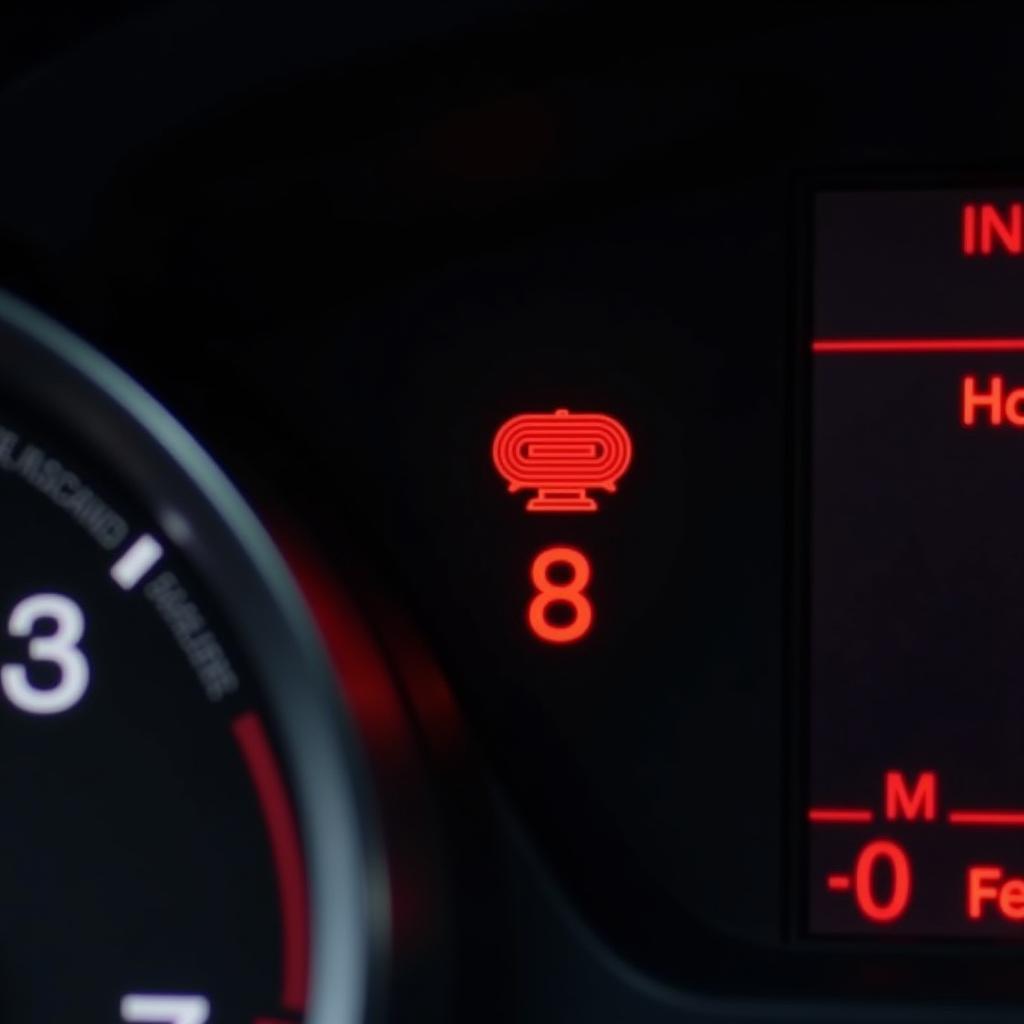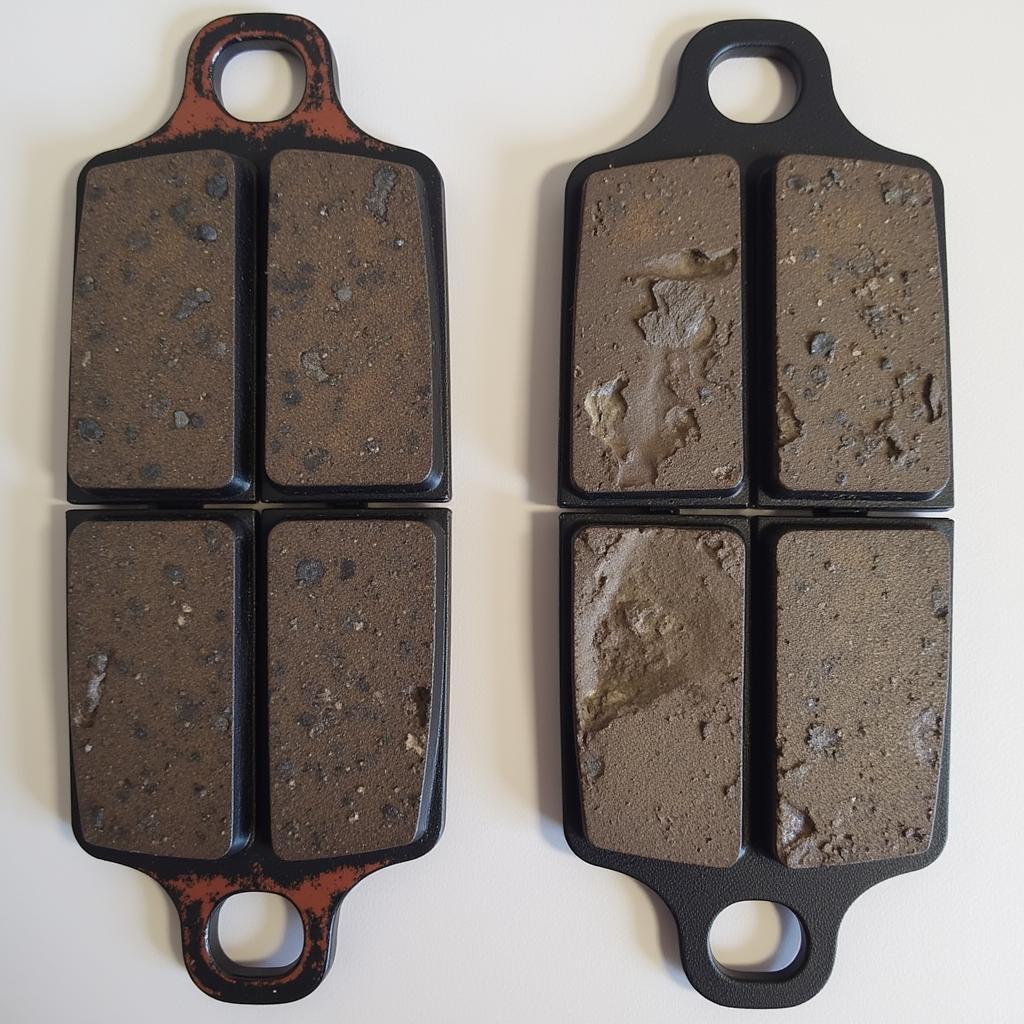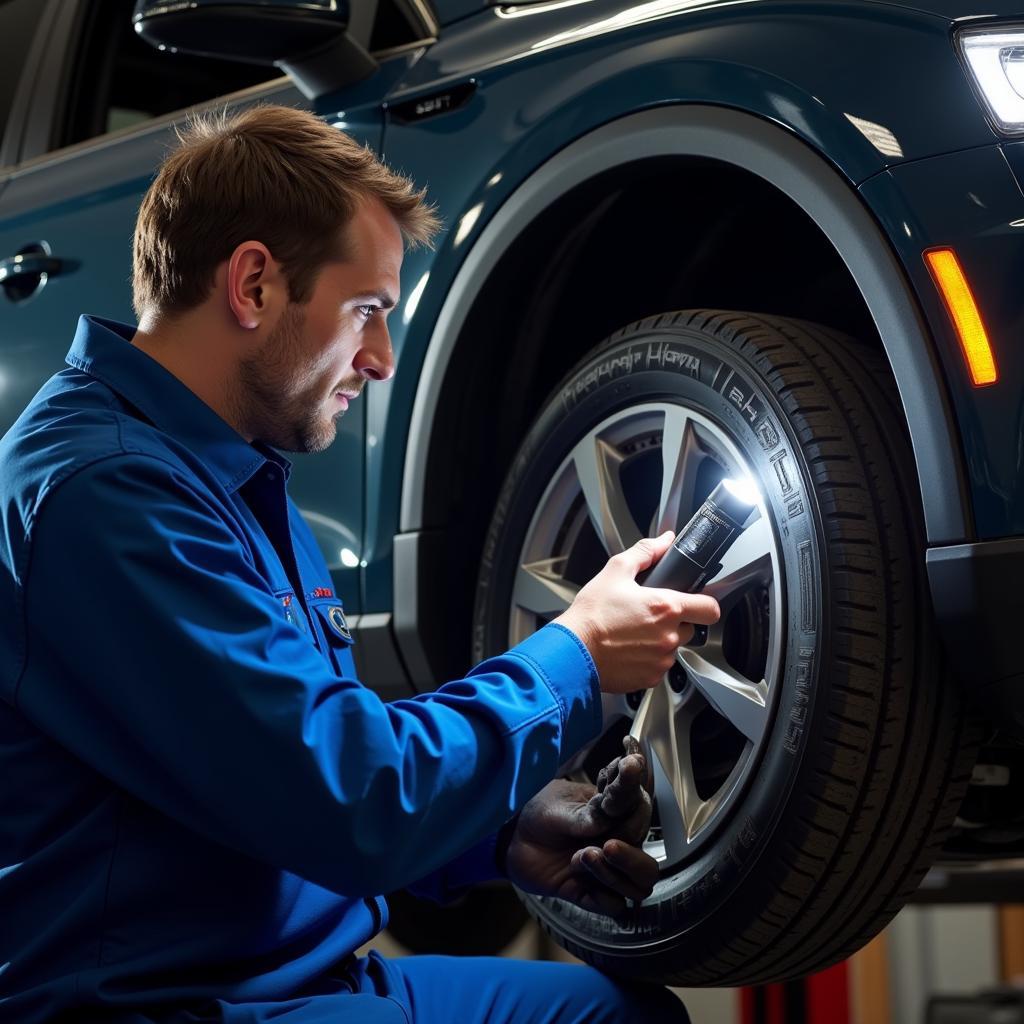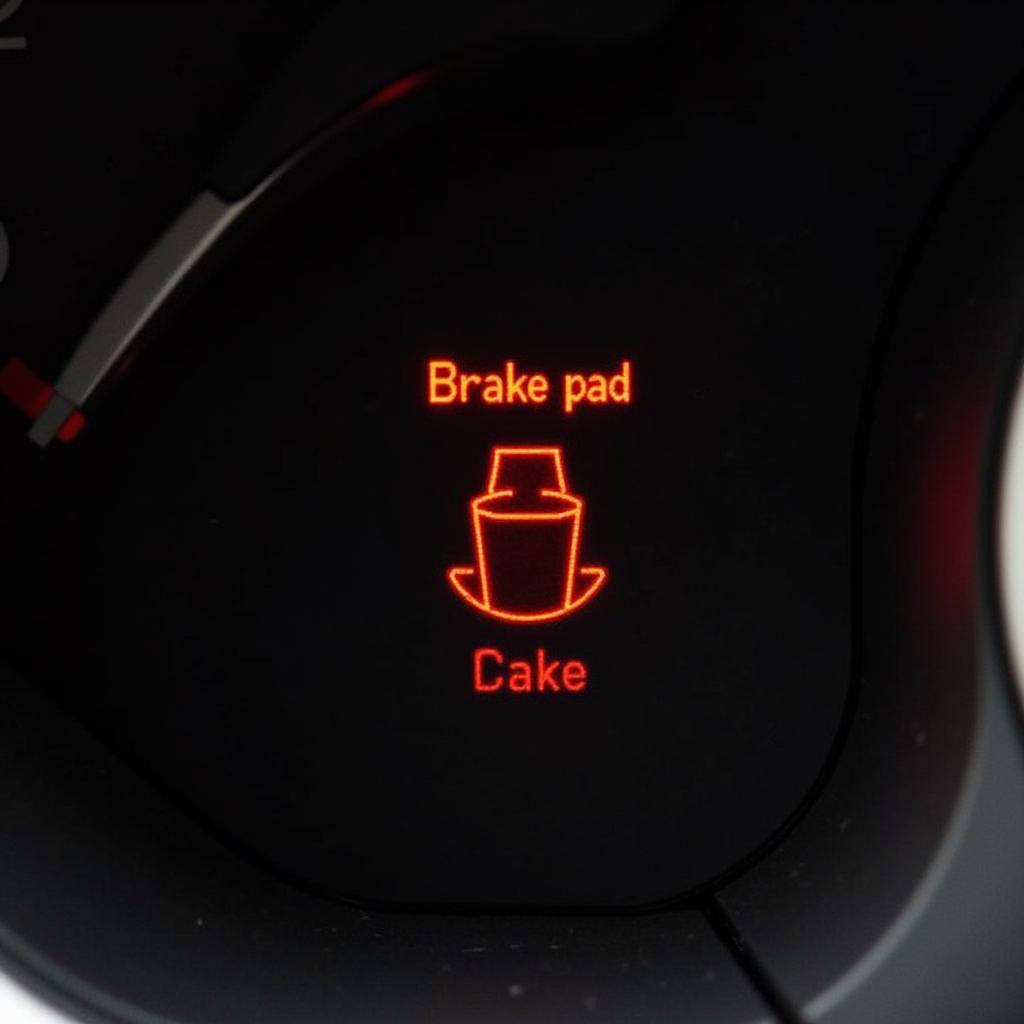If you own an Audi Q5, you know that it’s a high-performance vehicle that demands attention to detail. One crucial aspect of maintaining your Audi is staying on top of its brake system. So, what happens when the dreaded “brake pad warning light” illuminates on your dashboard? Don’t panic, this article will guide you through the potential reasons and provide a clear course of action.
Understanding Your Audi Q5’s Brake Pad Warning Light
The brake pad warning light is a safety feature designed to alert you about potential issues with your Audi Q5’s braking system. There are several reasons why this light might turn on, and understanding them is the first step towards addressing the problem.
Common Causes of an Illuminated Brake Pad Warning Light
Here are the most common reasons why your Audi Q5’s brake pad warning light might be on:
- Worn Brake Pads: The most likely culprit is simply worn brake pads. Over time, the friction material on the pads wears down, eventually triggering the warning light.
- Worn Brake Pad Sensor: Your Audi Q5 is equipped with brake pad wear sensors. These sensors are small wires embedded within the brake pads themselves. When the pad wears down to a certain point, the sensor comes into contact with the brake rotor, completing a circuit and illuminating the warning light.
- Low Brake Fluid: Brake fluid is essential for transferring hydraulic pressure from the master cylinder to the brake calipers, allowing you to stop your vehicle. If the brake fluid level is low, it could be due to a leak or worn brake pads, and the warning light might illuminate.
- Faulty Brake Pad Sensor: While less common, it’s possible for the brake pad sensor itself to malfunction. A faulty sensor might trigger the warning light even if the brake pads are still in good condition.
- Electrical Issue: In some cases, an electrical issue within the brake system, such as a short circuit or faulty wiring, could lead to the brake pad warning light illuminating.
 Audi Q5 dashboard with brake pad warning light illuminated
Audi Q5 dashboard with brake pad warning light illuminated
What to Do When Your Brake Pad Warning Light Turns On
Seeing any warning light on your dashboard can be concerning, but it’s crucial to remain calm and take the following steps:
- Assess the Situation: If the brake pad warning light comes on, try to recall the last time you had your brakes serviced. Have you noticed any unusual noises or vibrations while braking recently?
- Check the Brake Fluid Level: Find the brake fluid reservoir under the hood of your Audi Q5. The reservoir will have a “min” and “max” marking. If the fluid level is below the “min” mark, add the appropriate brake fluid (consult your owner’s manual for the correct type).
- Schedule an Inspection: Regardless of the brake fluid level, it’s crucial to schedule an inspection with a qualified mechanic, preferably one specializing in Audi vehicles, as soon as possible.
- Avoid Driving Long Distances: If you suspect your brake pads are worn, avoid driving long distances until you can get your vehicle inspected. Driving with worn brake pads can significantly reduce your braking power and increase your stopping distance.
Importance of Timely Brake Pad Replacement
“Regular brake inspections are essential for maintaining optimal safety,” says Mark Schmidt, a senior automotive technician with over 20 years of experience. “Ignoring a brake pad warning light can lead to more extensive and costly repairs down the line.”
Worn brake pads can cause a domino effect of problems within your Audi Q5’s braking system, leading to:
- Damaged Rotors: Driving with worn brake pads can cause damage to the brake rotors, which are the metal discs that the brake pads clamp down on to stop the vehicle. Damaged rotors can become warped or grooved, reducing braking efficiency and potentially requiring costly replacement.
- Caliper Damage: The brake calipers house the brake pads and pistons that apply pressure to the rotors. Worn pads can cause the calipers to overextend, leading to potential damage or premature wear.
- Reduced Braking Performance: Most importantly, worn brake pads significantly reduce your Audi Q5’s braking performance. This means you’ll need to apply more pressure to the brake pedal to stop, increasing your stopping distance and increasing the risk of an accident.
 Worn brake pads next to new brake pads
Worn brake pads next to new brake pads
Can I Drive My Audi Q5 with the Brake Pad Warning Light On?
While you might be tempted to continue driving with the brake pad warning light on, it’s highly discouraged. The warning light indicates a potential problem with your braking system that should be addressed promptly.
Driving with worn brake pads not only compromises your safety but can also lead to more extensive and costly repairs in the long run.
Diagnosing and Addressing the Problem Remotely
As a specialist in remote automotive diagnostics and programming, I can offer a unique solution. With your permission, I can remotely access your Audi Q5’s onboard computer system to diagnose the root cause of the brake pad warning light.
This allows me to:
- Retrieve Diagnostic Trouble Codes (DTCs): By accessing the vehicle’s computer, I can retrieve any stored DTCs related to the braking system, providing valuable insights into the issue’s nature.
- Analyze Live Data: Remote access allows me to monitor live data streams from various sensors within the braking system, such as brake fluid pressure, wheel speed sensors, and brake pad wear sensor readings. This real-time information helps pinpoint the problem area more accurately.
- Perform Remote Programming: In some instances, the issue might be related to software or module glitches within the braking system. Through remote programming, I can update software, calibrate modules, and potentially resolve the problem without requiring a physical visit.
Preventative Maintenance: Keeping Your Audi Q5’s Brakes in Top Condition
Prevention is always better than cure. To keep your Audi Q5’s brakes in top condition, follow these preventative maintenance tips:
- Regular Inspections: Have your brakes inspected by a qualified mechanic at least once a year or as recommended in your Audi Q5’s owner’s manual.
- Brake Fluid Flush: Brake fluid is hygroscopic, meaning it absorbs moisture over time. This moisture can reduce the fluid’s boiling point and lead to brake fade. It’s generally recommended to flush your brake fluid every 2-3 years or as recommended by your mechanic.
- Brake Pad Replacement: Brake pad lifespan varies depending on driving style and conditions. However, it’s generally a good idea to have your brake pads checked when they’re halfway worn to determine when they’ll need replacing.
- Quality Parts: When replacing brake components, always use high-quality parts that meet or exceed Audi’s specifications.
 Mechanic inspecting the brake system of an Audi Q5
Mechanic inspecting the brake system of an Audi Q5
Conclusion
The brake pad warning light on your Audi Q5 is a crucial safety feature not to be ignored. By understanding its potential causes and taking prompt action, you can ensure your safety and prevent further damage to your vehicle’s braking system.
Remember, regular maintenance and timely repairs are essential for optimal braking performance and your overall safety on the road. If you’re experiencing issues with your Audi Q5’s braking system, schedule an inspection with a qualified mechanic or consider remote diagnostic services for a convenient and efficient solution.

